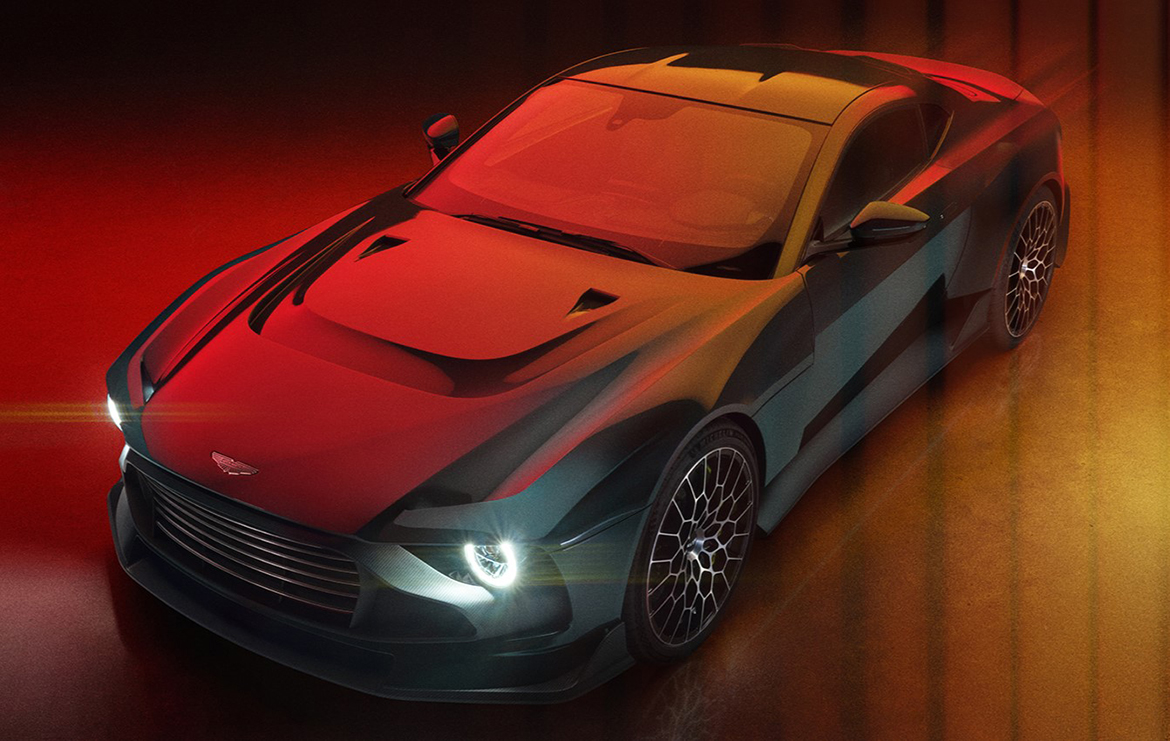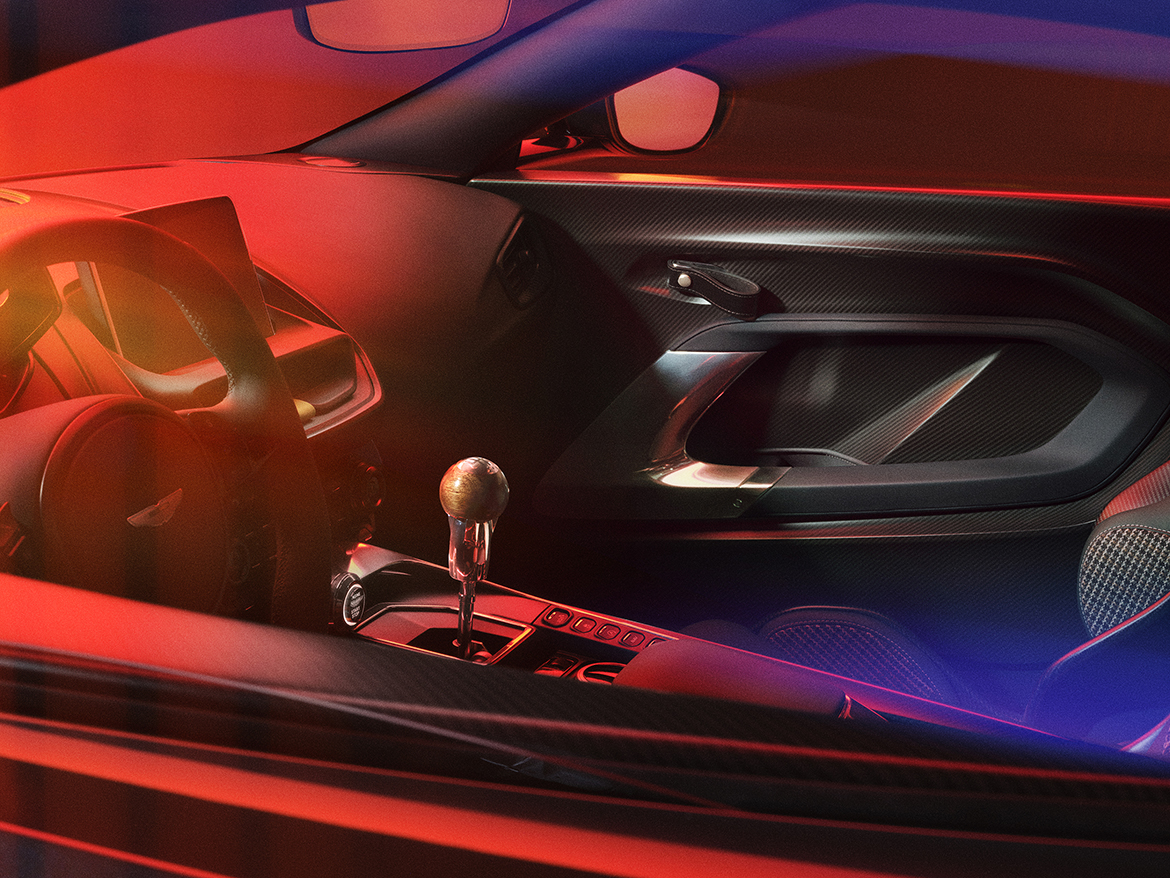To celebrate its 110th anniversary, Aston Martin has unveiled the Valour, a highly exclusive special edition with V12 engine and manual transmission, designed to honour the brand’s long tradition of prestigious front-engine sports cars and delight enthusiasts who want pure, visceral driving experiences. The design follows the demands of aerodynamics and cites mythical models of the past. The prominent front splitter and air intakes on the fenders embedded in the Valour’s sidewalls work in harmony with the rear windshield panel, the elegantly tilted Kamm tail and the prominent diffuser. “The Valour is gloriously non-homologated: it is a classic and old-school car rethought and recalibrated for 2023. A return to chiseled form away from the more sculptural forms that define current series production, with bold details and modern materials rooted in the present,” said Miles Nurnberger, head of design at Aston Martin.
At the rear stands out the LED lights that recall the revolutionary Valkyrie hypercar. A full-width aluminium element – milled and polished – outlines the back, separating the upper and lower sections with a remarkable visual effect. Among the most characteristic elements of the back are the three tailpipes made of lightweight stainless steel. With a wall thickness of less than 1 millimeter, these special mufflers save 7 kilograms of weight compared to a traditional exhaust system, while emitting high-impact music.
Valour’s celebration of Aston Martin’s heritage continues inside, with a timeless two-seater cockpit. The manual gear lever is the fulcrum: with a choice between machined aluminum, titanium, carbon fiber or walnut for the knob and a visible mechanism to emphasize the mechanical connection, Valour aims to return a high physical and emotional involvement. The use of materials is an Aston Martin trademark: on the Valour we find original and impressive combinations from which customers can create their own unique specifications. For example, the traditional wool tweed inspired by the seat upholstery of the 1959 Le Mans-winning DBR1 that creates a certain contrast with the high-tech interweaving of carbon fibre used to form the seat structures, door panels, air intakes, upper centre console and transmission tunnel.













